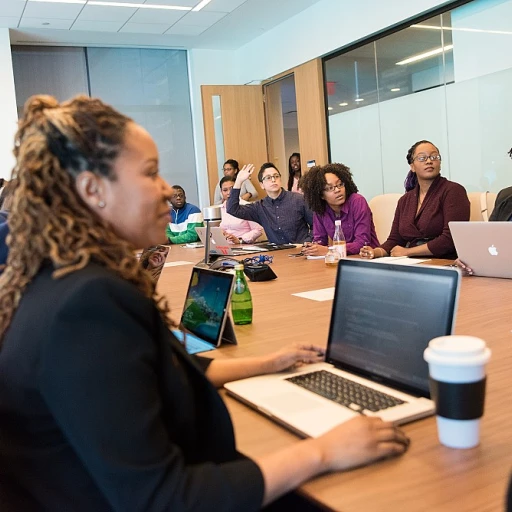
Defining the Agile Coach
Exploring the World of the Agile Coach
In the ever-evolving landscape of modern business, the role of the Agile Coach is essential. Agile coaches are pivotal in guiding teams and organizations towards embracing agility and enhancing their operations. Their main objective is to foster a mindset of continuous improvement and learning, facilitating agile adoption across team levels and enterprise-scale. Agile coaches specialize in various agile practices, including Scrum and Kanban, and are equipped with skills to help teams operate with efficiency and cohesion. They serve as change agents, encouraging transformations that align with agile principles such as transparency, collaboration, and customer-centricity. Through agile coaching, they mentor teams to navigate the complexities of organizational change, driving a cultural shift towards business agility. An agile coach supports teams by acting as a mentor and facilitator, teaching and modeling scrum master practices. This role involves more than just introducing agile frameworks; it emphasizes developing leadership skills and nurturing an environment where agile teams can thrive. By doing so, agile coaches help build resilient organizations ready to adapt to market changes and technological advancements. In essence, the agile coach is not just a master of agile frameworks but also a catalyst for transformation in the organization. This pivotal role intersects with that of an agile leader, as both contribute significantly to the broader enterprise agile transformation and the pursuit of organizational agility.Understanding the Agile Leader
Unpacking the Role of an Agile Leader
To truly grasp the essence of being an agile leader, it is crucial to understand how this role fits into the broader landscape of agile practices. Agile leaders are pivotal in driving transformation within organizations, guiding teams with adept leadership skills to foster an environment of resilience and continuous improvement. Unlike the specialized focus of a scrum master, who primarily concentrates on the team level, agile leaders must have a broader view. They are tasked with steering the organization towards agility by embracing change, promoting business agility, and aligning the team's goals with the enterprise's vision. Agile leaders often champion the cause of agile transformation within an organization. They implement strategies that enhance team performance while ensuring that organizational objectives are met. By fostering an environment conducive to agile adoption, these leaders help instill agile principles throughout the organization, nurturing a culture of trust and empowerment. The role of an agile leader isn't just about guiding teams. It extends to being a change agent, someone who can see the big picture and integrate agile practices effectively across departments and applications. As such, they require a distinct blend of organizational and leadership skills to drive successful agile transformations. Agile leadership is a dynamic and evolving role that aligns closely with the organization's overarching strategy and goals. These leaders must continuously adapt and evolve alongside the agile teams they guide. Exploring opportunities in executive coaching careers can provide valuable insights and aid in developing the necessary skill set to thrive as an agile leader, marking a significant pathway in professional growth.Key Differences Between Agile Coach and Agile Leader
Exploring the Core Distinctions
In any organization striving for agile transformation, both agile coaches and agile leaders play crucial roles, yet they each bring distinctive responsibilities and skills to the table. Understanding these differences can help teams and organizations allocate resources more effectively across various agile practices. Agile coaches are often seen as facilitators of change, focusing heavily on coaching teams and individuals to adopt agile principles. They work closely with scrum masters and agile teams to enhance business agility and drive effective agile adoption. Their role is centered around helping teams understand and implement agile frameworks, like Scrum, through continuous coaching and mentoring. On the other hand, agile leaders have a broader scope. They are typically involved in aligning organizational goals with agile practices and ensuring that these practices are embedded into the business strategy. Agile leaders facilitate change at an enterprise level, promoting an environment that supports agility and transformative leadership. Their focus is not only on the team level but also on influencing the organizational culture to embrace agile values and principles. Moreover, an agile leader provides direction and clarity for teams, fostering an agile environment that allows teams to thrive. They work on creating a supportive organizational structure that champions innovation and rapid adaptation. In contrast, agile coaches work primarily on the ground with teams, emphasizing the importance of clear communication, collaboration, and coaching agile methods. For those interested in these roles, perhaps crafting an impressive quality analyst resume can be a good start, especially when transitioning into positions that require a deep understanding of agile methodologies and practices. Such a step may also highlight relevant skills that align with either coaching or leading in agile contexts. Ultimately, while it's clear both coaches and leaders aim to drive agility, their focal points within the organizational framework set them apart. By distinguishing between these roles, businesses can more effectively harness the strengths of both agile coaching and agile leadership in their transformation journeys.Synergies Between Agile Coaches and Agile Leaders
Creating a Harmonious Dynamic for Success
Within the interconnected spheres of agile coaching and agile leadership, the collaboration between these roles can become a catalyst for effective organizational transformation. The synergy created between coaches and leaders is pivotal in harnessing the power of agile principles across the enterprise. Agile coaches and leaders catalyze change and influence at both the team and enterprise levels. Through agile coaching, coaches offer guidance to teams, facilitating the adoption of agile practices. This nurtures agile teams in embracing agility throughout their processes. Meanwhile, agile leaders are pivotal in shaping the broader organizational culture to sustain these transformations.- Guiding teams towards continuous improvement: An agile coach plays a critical role in guiding teams by offering effective coaching techniques that align with the organization’s agile adoption goals. This empowers teams to enhance their agility and master agile skills consistently.
- Fostering transformational leadership: Agile leaders aim to develop transformational leadership that supports organizational agility. This involves encouraging leadership styles that facilitate change, thereby aligning with the principles of agile transformation.
Upskilling for Agile Roles
Building the Foundation for Agile Roles
Upskilling for agile roles is crucial for anyone looking to thrive in today's dynamic business environment. Whether you're aiming to become an agile coach or an agile leader, understanding the core principles of agility is essential. Both roles require a deep comprehension of agile practices, but the paths to mastering these roles can differ significantly.
Essential Skills for Agile Coaches
Agile coaches need to focus on developing strong coaching skills to effectively guide teams through agile transformations. This involves:
- Facilitation: Mastering the art of facilitating discussions and workshops to foster collaboration and innovation within teams.
- Mentoring: Providing guidance and support to scrum masters and team members to enhance their understanding of agile principles.
- Change Management: Helping organizations navigate the complexities of agile adoption and transformation.
Key Competencies for Agile Leaders
Agile leaders, on the other hand, need to focus on leadership skills that drive organizational change and promote business agility. Important competencies include:
- Visionary Leadership: Setting a clear direction for the organization and inspiring teams to achieve strategic goals.
- Strategic Thinking: Understanding the broader business context and aligning agile practices with organizational objectives.
- Empowerment: Creating an environment where teams feel empowered to make decisions and take ownership of their work.
Blending Skills for Maximum Impact
While the skills required for agile coaches and agile leaders may differ, there is a significant overlap that can be leveraged for maximum impact. Both roles benefit from a strong understanding of agile principles and the ability to foster a culture of continuous improvement. By upskilling in these areas, professionals can effectively support their teams and drive successful agile transformations within their organizations.
Challenges in Upskilling for Agile Positions
Navigating the Upskilling Journey
Upskilling for agile roles requires a strategic approach due to the dynamic nature of agile practices. Both agile coaches and leaders face unique challenges as they strive for mastery in their respective areas. The rapid pace of organizational change and the need to adapt continuously mean that skills quickly become outdated. Here are some challenges one might encounter:- Evolving Agile Practices: Agile methodologies, including Scrum, often evolve, requiring continual learning and adaptation. This means agile coaches and leaders must stay updated on the latest frameworks and techniques.
- Balance Between Theoretical Knowledge and Practical Application: Understanding agile principles theoretically is only half the journey. Successfully applying these principles in real-world scenarios proves challenging, as it requires a deep understanding of the complexities within teams and organizations.
- Developing Emotional Intelligence: Emotional intelligence plays a crucial role in agile leadership. Building these skills requires not just formal training but also ongoing self-reflection and adjustment.
- Facilitating Organizational Change: Driving agile transformation demands the ability to manage change effectively. Leaders must overcome resistance within the organization and ensure alignment with agile values.
- Acknowledging Diverse Learning Styles: Individuals within teams have different learning preferences. Agile leaders and coaches must understand and accommodate these variances to enhance team-level adoption of agile practices.












